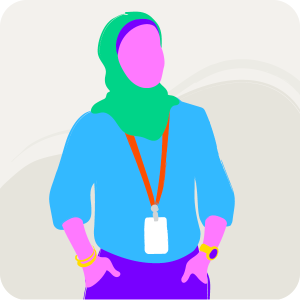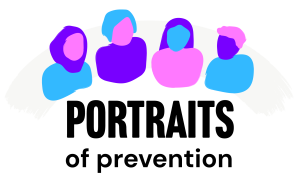
Claire
Migrant and refugee communities
Claire leads a primary prevention program that focuses on preventing violence against migrant and refugee women.
A notable organisation leading primary prevention with and for migrant and refugee communities is the Multicultural Centre for Women’s Health. MCWH is a community-based, not-for-profit organisation led by, for and with women from migrant and refugee backgrounds. They are part of the Women’s Health Services Network, and their prevention programs have a focus on building the capacity of the primary prevention and gender equity workforces in intersectional feminist primary prevention practice and effectively engaging migrant and refugee communities in the prevention of violence against women.
One of their flagship programs is Connecting Communities, a free program of learning and support activities for prevention practitioners in the community sector who are funded to work in and with multicultural and/or faith-based communities.
Claire brings to her work a wealth of skills drawn from her background in public health in international development. Her career began in international gender equality programs, where she worked on community engagement, fundraising and partnership brokering.
For Claire, lived experience and professional skills are not separate but complementary. Like many of her peers, she excels in community engagement. Her nuanced understanding of language, culture and faith in Australia further helps to establish trust and buy-in. She has observed that many first-generation migrants often find their skills undervalued but bring invaluable perspectives when given opportunities that align with their values. Many enter primary prevention through community services, seeking roles that recognise and appreciate their unique contributions.
In her current role, Claire has deepened her understanding of how her organisation fits into the broader prevention landscape. She confidently articulates her organisation’s goals and role within a complex system and has developed expertise in family violence policies such as the Multi-Agency Risk Assessment and Management Practice Framework (MARAM).
Claire confidently adapts primary prevention frameworks like Change the story and Pride in Prevention into actionable, context-specific practice. Claire argues that both prevention activities and capability building programs must meet audiences and communities where they are and adapt to their unique contexts. Her facilitation style focuses on working alongside participants, building collaboration rather than hierarchy.
Similarly, Claire’s approach to training delivery emphasises translating theory into practical, nuanced applications that support participants to critically reflect. She values peer-based learning and flexible curricula that align with these needs and include case studies to demonstrate their application in practice. She has noticed, however, that that workers often lack time for self-directed learning.
Although Claire’s programs do not specifically target men and boys, some health education initiatives include mixed groups. Bilingual health educators, she notes, need to be supported around the specific cultural factors involved in working with men within their own community. She recognises the importance of involving men in prevention work but firmly believes such efforts must be led by and accountable to women.
Intersectionality is at the heart of Claire’s work. She champions employing people with lived experience, empowering affected communities to lead initiatives, and examining how overlapping systems of inequality shape experiences. For her, intersectionality is not a skill but a mindset – one that focuses on understanding and addressing the interconnectedness of structural inequities.
Claire sees a clearly articulated workforce capability framework as a valuable tool for recruitment, professional development and sector unification. It would make key skills and knowledge explicit, supporting workers to move more freely within the sector and promoting consistency in training programs. Such a framework could also enhance the legitimacy of the prevention sector, supporting long-term investment and a great sense of professional pride.
Designing and implementing this framework requires nuanced application and opportunities for reflection. Claire stresses the need for introductory programs to welcome new entrants to the sector and for simpler, more accessible terminology to aid communication. She also advocates for bridging silos between prevention, early intervention and response work, as these areas often overlap in practice.
Read more portraits of prevention
Jessica
Sport setting
Jessica is a manager in a specialist gendered violence prevention team that is funded to build the capacity of community sport and recreation to address and prevent gender-based violence.
Starlady
LGBTIQ+ primary prevention – Zoe Belle Gender Collective
Zoe Belle Gender Collective is a small trans and gender diverse-led advocacy organisation that was previously funded as a pilot project under Rainbow Health Australia’s primary prevention project.
Mel
Women’s health service
Mel is a program manager leading a gendered violence prevention program at a Women’s Health organisation, which is part of Victoria’s Women’s Health Services Network.



